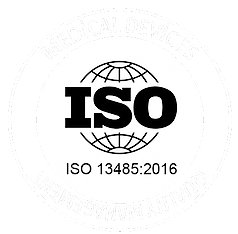
Five Costly Mistakes that Can Sink Your Device Startup - Part I
Translating a groundbreaking concept into a commercially viable medical device requires navigating a complex web of challenges, from securing funding to overcoming stringent regulatory hurdles.
Here are five common mistakes that can derail your medical device startup on the path to commercialization, along with actionable strategies to overcome them.
Mistake #1: Not Optimizing your Regulatory Path
Imagine this: You've poured your heart and soul into developing a revolutionary medical device. It has the potential to change countless lives. But then you hit a brick wall—the regulatory maze. Deadlines loom, costs balloon, and worst of all, your device gets delayed.
The key to avoiding these pitfalls is having a comprehensive regulatory strategy from the get-go.
When considering regulatory pathways, there is more to it than PMA and 510(K). While device entrepreneurs are typically aware of the most common FDA programs, they may miss out on opportunities for more suitable options that are less commonly used, such as:
- De Novo: For novel, low-to-moderate risk devices without a predicate
- Humanitarian Device Exemption (HDE): For devices treating rare conditions
- Custom Device Exemption (CDE): For devices tailored to specific patients
- Expanded Access Program (EAP): For investigational devices used in serious conditions
- Product Development Protocol (PDP): For well-established technologies, allowing early agreements on safety and effectiveness
You can find additional information about each of these pathways in this Greenlight Guru article.
Additionally, in recent years the FDA has introduced several programs to expedite device approval, including:
- Breakthrough Devices Program: For devices treating life-threatening conditions, offering prioritized review and frequent FDA interactions.
- Safer Technologies Program (STeP): For devices improving safety compared to current treatments, providing interactive communications and early data development engagement.
- Early Feasibility Study (EFS) Program: Allows early clinical evaluations to gather preliminary safety and effectiveness data, facilitating early testing and iterative development.
One of the grave mistakes startups make is delaying engagement with regulatory authorities. Early interaction can help identify potential regulatory hurdles and provide guidance on the necessary studies and documentation. Q-Submissions, including Informational Meetings and Pre-submissions, allow sponsors to obtain FDA feedback on specific questions, which is particularly useful for complex products like implantable devices or innovative testing strategies. At the same time, there is never a second chance for a first impression, so make sure you are well-prepared for any interactions with the regulators.
Last but not least, it is important to recognize that no matter which path you choose, regulatory considerations such as adherence to standards like ISO 14971 and IEC 62340 will significantly impact product development timelines, presenting specific requirements for risk management and documentation throughout the process.
Mistake #2: Trying to Do Too Much Too Soon
One of the most common pitfalls for medical device startups is the temptation to cram as much functionality as possible into the initial version of their implantable device. In reality, more is not always better, and trying to compete with mature, state-of-the art products on standard features is a distraction from proving the benefits of a novel and differentiating technology.
Getting a medical device to market is a journey riddled with regulatory hurdles and the constant pressure to prove market viability. Startups, forever resource-constrained, typically have just enough capital to reach the next critical milestone. This makes defining these milestones with laser focus absolutely essential.
To start with, minimizing regulatory burden at the early stages of the device lifecycle is crucial. Complex devices with multiple components and extensive functionality require increased testing and documentation to satisfy regulatory requirements for approval. By concentrating on the core functionalities that prove the device’s efficacy and safety, startups can navigate regulatory hurdles more efficiently.
No less important is building trust with both regulators and end-users. By eliminating superfluous complexities in the initial release, developers can create a reliable device that consistently fulfills its intended purpose, fostering confidence with regulators and patients. This initial success establishes a solid foundation for subsequent iterations where additional functionality can be safely introduced.
Last but not least, overly complex designs can easily lead to cost overruns and project delays, jeopardizing crucial milestones. Conversely, a simpler design translates to streamlined manufacturing processes, reduced testing expenditures, and a more predictable development timeline.
To reduce risk and safely meet their funding milestones, medical device startups must resist the urge to overcomplicate their initial designs. Seeking the advice of product development experts with experience in developing similar devices can provide a well-balanced outside perspective to help you prioritize the essential functionality at each development stage based on a startup’s most crucial resources: money and time.
Mistake #3: Failing to Take Advantage of Existing Know-how
Medical device entrepreneurs take pride in being innovators. But there is a fine line between innovation and the tendency to “reinvent the wheel”.
The medical device industry has a rich history of innovation, with countless lessons learned from both successes and failures. Ignoring this history means you might waste valuable time and resources solving problems that have already been addressed. Proven product blueprints, established manufacturing processes, successful regulatory pathways, and tested clinical trial designs can provide a solid foundation upon which to build, rather than starting from scratch.
Device startups often get caught up in the notion that their challenge is unique enough to warrant inventing every aspect of the product from scratch. They grapple with the challenge of distinguishing their product's unique features while navigating the multifaceted layers of medical device development.
The key to success lies in a nuanced understanding of the different technological components that make up the product architecture and their associated risks. By distinguishing these elements, startups can focus their innovation efforts where it counts, while utilizing existing assets and expertise to mitigate risks and streamline their path to market.
When it comes to implantable devices, off-the-shelf components are rarely suitable beyond the proof of concept stage. Depending on specific market requirements, it may be possible to reduce development cost and time by using off-the-shelf or “catalog” components for a first-generation device in places where development can be extremely expensive, such as leads, batteries, or hermetic feedthroughs.
What is more applicable yet commonly overlooked is existing know-how that can be transferable across devices and clinical domains. This know-how applies to device components that require specific medical and implantable device expertise but are not unique to your specific application. For instance, power management, signal acquisition, energy delivery, and data communications are common challenges for both cardiac and neuromodulation devices, as well as wearables.
These building blocks require specialized features and cannot be sourced off-the-shelf. Yet they rely on technologies that are often already utilized, tested, and proven in other devices. Understanding where existing technologies and expertise can be leveraged and repurposed in your device can significantly reduce the cost, time, and risk associated with your product development.
“The Nocturnal team greatly contributed to the development of our ground-breaking implantable device combining CCM® therapy and defibrillation functionality. They provided expertise that helped us to overcome several design challenges and played an important role in turning our vision into a clinically-viable product.”
David Prutchi, Ph.D., CTO and Executive VP, Impulse Dynamics
Continue reading in Part II of this post
MOST READ POSTS
Insights from a decade of milestone-based projects
Transforming biosignals into clinical insights
Why investors say No to medical device startups


